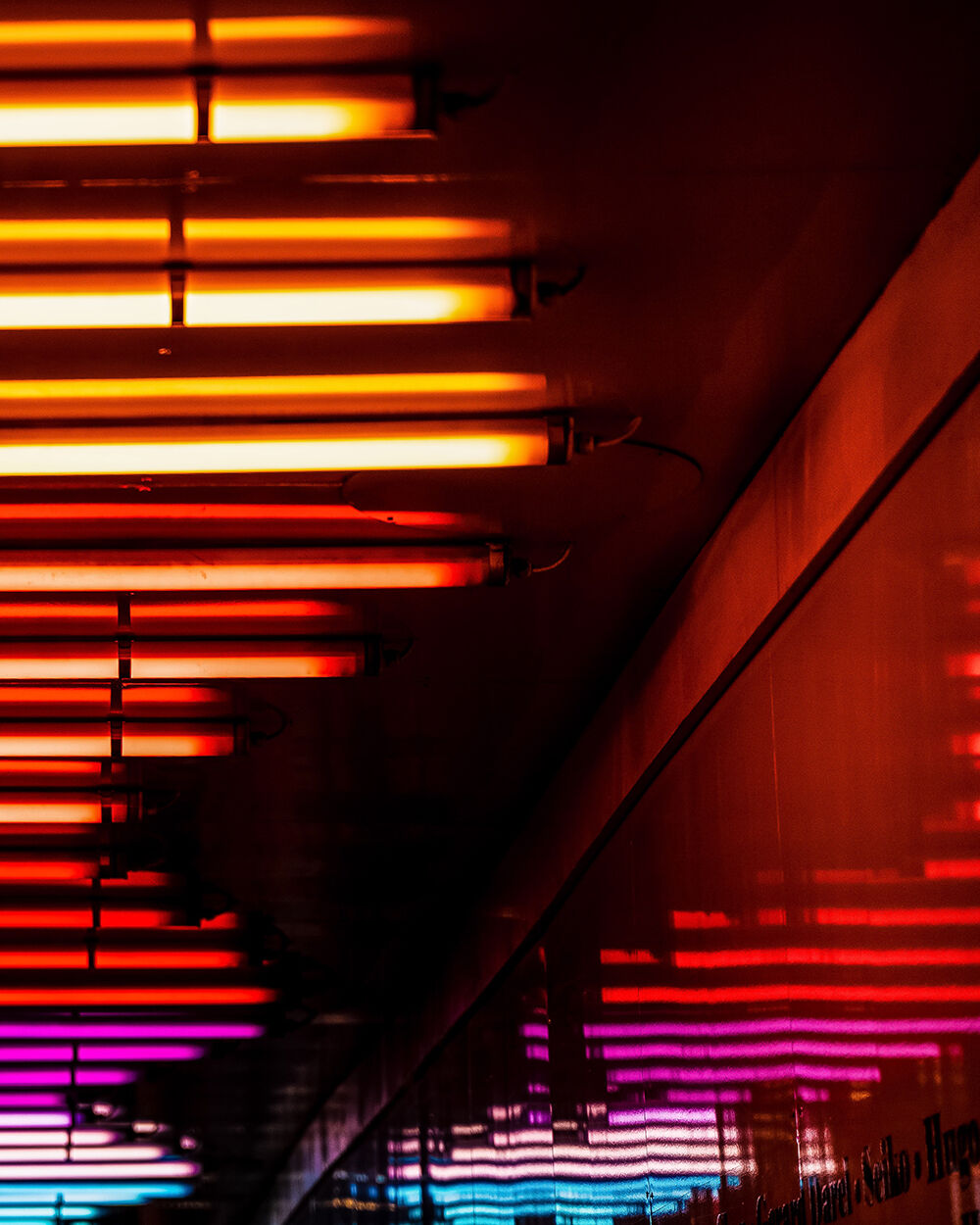The Science and Art Behind Color and Light
What we know to be color is actually light: different wavelengths of it, to be exact. For humans, the range of visible light extends between 400 and 700 nanometers. When these electromagnetic waves reach the eye, specialized cells in the retina, called cones, translate them into neural information that then travels to the brain. The color we see depends on the length of the electromagnetic wave that hits our eye.
According to the trichromatic theory of color-vision, different cones pick up different wavelengths of light: “S” cones receive short lengths (blue-violet), “M” cones receive medium lengths (yellow-green) and “L” cones receive long lengths (orange-red). An object appears to be given color because of the type of light it reflects.
Photo courtesy of David Geib/Pexels

Photo courtesy of Decoded Magazine

Photos courtesy of MOCA

Though not a visual artist himself, Nico Martin also
understands the magic of colored light. In 2019, Martin was asked to cover his
car in “fairy-lights” and drive it around his town, all to bring joy to one of
his neighbors, an 11-year-old boy afflicted with Duchenne Muscular Dystrophy.
When the COVID-19 pandemic hit, he realized he might be able to spread the same
happiness to a larger radius. On November 25
, 2021, Martin began a
five-week tour of the UK in his electric MINI. Wrapped in 2,000 green, blue,
purple, pink, red, and yellow LED lights, the car gifted glee to raise money
for three charities—the Alzheimer’s Society, MS Trust, and Duchenne UK.
Through the medium of light, whether LED or sun, colors become saturated and immersive. We invite you explore our range of shades through our Fabric Finder to create a mesmerizing experience of your own.
Photo courtesy of Autoevolution








